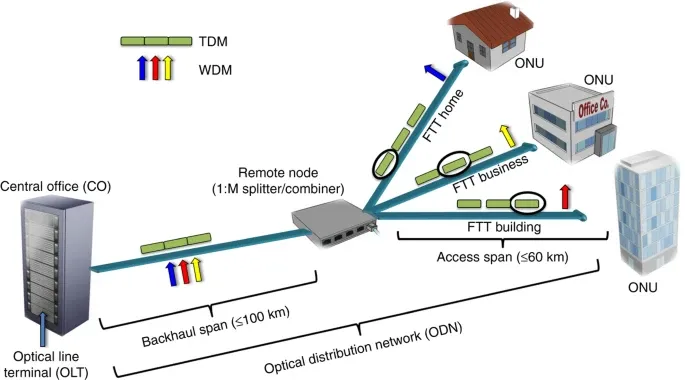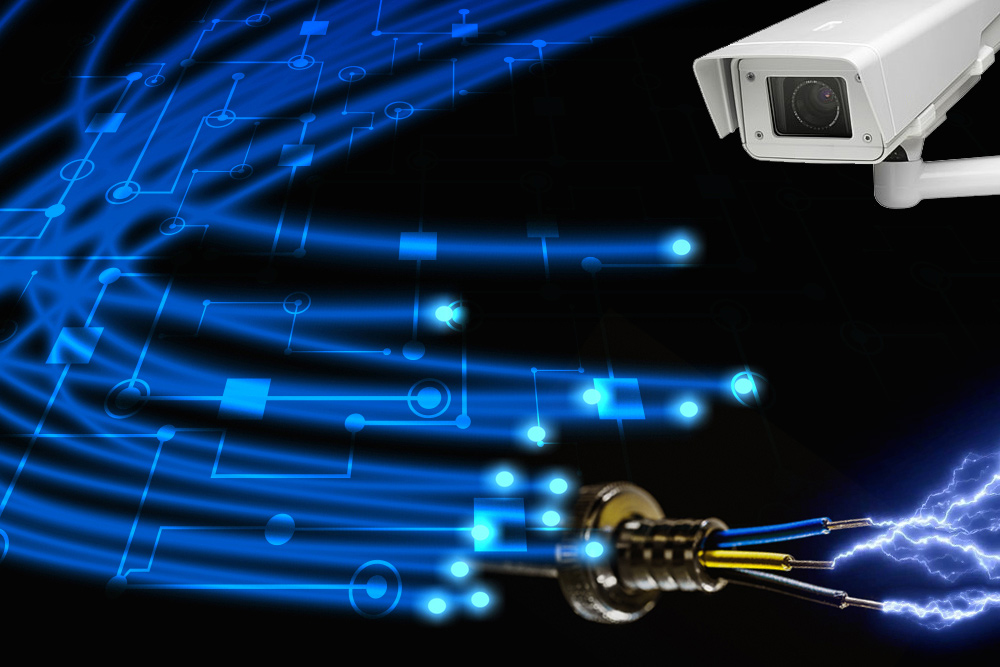Why Fiber Optic Protection Solutions Are the Future of Protection
The shift to fiber optic protection systems marks a significant advancement in the realm of defense, driven by their phenomenal information transmission abilities and resilience to external interferences. As the landscape of safety advances alongside emerging modern technologies such as AI and IoT, the possibility for fiber optics to improve and redefine protection infrastructures ends up being increasingly obvious.
Advantages of Fiber Optic Equipments
One of the primary benefits of fiber optic systems is their premium data transfer capability, which assists in the transmission of huge quantities of data over long ranges without substantial loss. This particular is especially helpful for safety applications that need the continuous tracking and transfer of high-definition video feeds, sensing unit information, and other vital info. Fiber optics can suit the expanding demands of modern security systems, making certain that information remains undamaged and trusted.
In addition, fiber optic wires are less vulnerable to electromagnetic disturbance, which can be a substantial problem in atmospheres with various digital tools. This resistance boosts the stability of the data being transmitted, thereby reducing the danger of information violations or system failures. Fiber optic systems are naturally much more protected than typical copper wires, as tapping right into a fiber optic line without discovery is extremely challenging.
The durability of fiber optic cable televisions also adds to their charm. They are resistant to environmental aspects such as wetness and temperature changes, lowering upkeep expenses and raising system durability. In general, these benefits position fiber optic systems as a durable and efficient choice for contemporary security facilities, making certain dependable and safe information transmission.
Enhanced Data Transmission Speed

The ability to transfer huge quantities of information promptly facilitates the seamless combination of high-def video clip feeds and progressed analytics. Protection systems can currently refine and examine information in real-time, improving reaction times and situational understanding. Furthermore, fiber optic links sustain longer transmission ranges without destruction of signal top quality, making them ideal for expansive security networks.
The enhanced speed of fiber optic systems not only enhances the performance of security procedures yet additionally lowers latency. This is specifically vital in essential scenarios where prompt decision-making can stop safety breaches or reduce potential threats. As organizations remain to prioritize safety and performance, the need for fast and trustworthy information transmission will certainly strengthen fiber optic systems as a foundation of contemporary safety and security framework.
Resistance to Interference
Fiber optic protection systems continually show remarkable resistance to electro-magnetic disturbance, a vital advantage in settings susceptible to electronic sound. Unlike conventional copper cables, which can be adversely affected by electro-magnetic fields, superhigh frequency disturbance, and various other kinds of electric disruption, fiber optic wires use light to send information. This integral property makes sure that the signals continue to be clear and unchanged, no matter bordering digital activity.
The usage of glass or plastic fibers look at these guys in fiber optic technology develops a barrier versus interference, permitting reputable information transmission even in tough scenarios such as commercial centers, urban locations with high digital traffic, or areas near radio towers. This characteristic dramatically reduces the probability of signal degradation or loss, making fiber optic systems specifically ideal for safety applications where honesty and accuracy of data are paramount.
Furthermore, this resistance to disturbance boosts the overall efficiency and integrity of safety and security systems, making certain that monitoring and alert systems work flawlessly. In a world where safety and security is progressively threatened by advanced modern technologies, the resilience of fiber optic systems sticks out as a crucial feature, reinforcing their condition as an essential element of contemporary safety framework.
Cost-Effectiveness In Time
Considerable price financial savings can be achieved gradually with the application of fiber optic protection systems. While the first financial investment may seem higher contrasted to typical copper-based systems, the lasting economic advantages end up being evident through lowered functional and upkeep expenses (fiber security). Fiber optic wires are inherently much more resilient and less susceptible to environmental variables, which converts to reduce replacement and repair expenses over their life-span
In addition, fiber optic systems need much less power to operate, which further reduces power expenses. Boosted data transmission capacities enable less repeaters and amplifiers, minimizing devices investment and improving installment processes. The scalability of these systems likewise contributes to cost-effectiveness, as organizations can increase their safety and security framework without incurring considerable added expenses.
One more variable to consider is the enhanced performance in monitoring and action capacities that fiber optics offer. Boosted real-time data transmission can result in quicker case response times, possibly mitigating losses and responsibilities associated with safety breaches. Altogether, the long-lasting advantages of fiber optic protection systems not just justify the first expenditure but additionally position them as a monetarily sensible selection for organizations seeking robust security remedies.

Future Advancements in Security
Progressing click this link technologies are set to reinvent security systems, integrating fabricated knowledge (AI) and machine discovering to boost threat detection and reaction abilities. These innovations will enable safety systems to assess vast amounts of information in real-time, recognizing patterns and anomalies that indicate possible hazards. This positive strategy will make it possible for quicker decision-making and much more reliable incident feedbacks.
In addition, the consolidation of the Net of Things (IoT) is leading the way for interconnected security devices, offering comprehensive surveillance and monitoring. Smart sensors can pass on details concerning ecological modifications, while automated notifies can notify security personnel immediately of suspicious tasks.
In addition, the development of biometric innovations will further bolster protection devices. Facial acknowledgment, finger print scanning, and retina recognition are coming to be a lot more sophisticated, providing layers of verification that are tough to bypass.
Conclusion
In conclusion, fiber optic protection you could try this out systems represent a significant innovation in defense innovation, providing exceptional data transmission rate, resistance to electromagnetic interference, and long-term cost-effectiveness. As the need for advanced safety and security remedies remains to grow, the assimilation of fiber optics with arising modern technologies such as AI, IoT, and biometrics will even more enhance security facilities (fiber security). The combination of these innovations will certainly make sure a more safe and secure and responsive setting, solidifying optical fiber as a foundation of future safety and security systems
Comments on “A Comprehensive Guide to Fiber Optics Infrastructure for Security Installations”